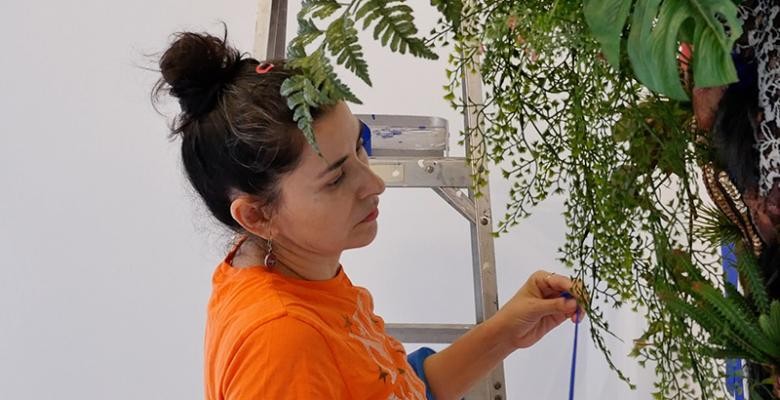“I am interested in nature’s capacity to reclaim space and break down artificial, human-made structures,” said Puerta, who began the Botánico series in 2010. “I use solely artificial/human-made plants that are normally designed to adorn and create maintenance-free gardens, which are static and under our absolute control.”
Composed of a range of materials—including concrete, clay, wood, foam, fabric, paper pulp, handmade paper and craft and recycled items— the installation suggests a pastoral ruin. It mimics weeds slowly spreading into abandoned spaces and explores notions of control, consumerism and the fragility of life.
“This is a moment to celebrate Puerta’s innovative work,” said Deborah Cullen, director and chief curator of the Miriam and Ira D. Wallach Art Gallery, which co-commissioned the work with Miller Theatre. “Her Miller Theatre installation disrupts the venerable walls of the hall with mysterious, sprouting new forms.”
The site-specific exhibition is the fifth such collaboration between Miller Theatre and the Wallach.
“The transformation of the theatre lobby has been a highlight of the last four seasons, as we’ve commissioned visual artists to use the lobby walls as their canvas,” said Melissa Smey, the executive director of Miller Theatre. “Each year has yielded a dramatically different creation, and each has been perfect for the space.”
Manigua is on display throughout the 2017-18 season. On Oct. 17, Miller Theatre will host a conversation with Puerta about the artwork, co-sponsored by the Columbia University Arts Initiative.
